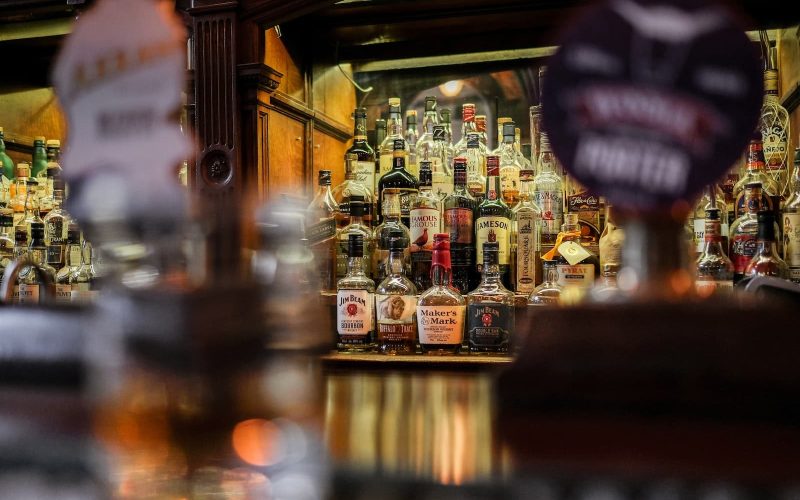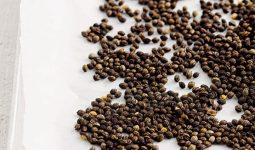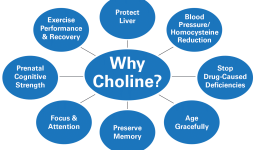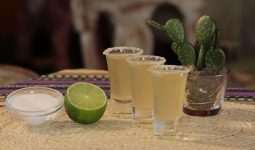If you know how to appreciate your liquor, you must have been a connoisseur of Scotch and bourbon.
These two excellent alcoholic beverages are based on their type of whiskey, which has a rich history.
Though their base is the same, scotch and bourbon suit different tastes and occasions.
Both are world-famous and strongly associated with their place of origin, where the similarities end.
A few key differences between scotch and bourbon make the distinction obvious and important to drinkers.
The amount of whiskey in liquor stores or duty-free is impressive and can also be overwhelming at first glance.
But knowing more about the category and understanding your palate can help you choose the right whiskey.
However, what differentiates one whiskey is where it comes from, the fermentation process, and the grains used.
This will give you a better understanding of the difference between Scotch, bourbon, and other whiskeys present in the world today.
In this article, we will provide the main significant difference between Scotch and bourbon and just about everything you need to know about the nuances of these two spirits.
Key Difference Between Scotch and Bourbon
Scotch and bourbon are the two most prevalent subcategories of distilled spirits. The first thing to note is that they are both whiskeys.
But before discussing the difference between Scotch and bourbon, let’s first talk about its origins: Why are Scotch and bourbon called whisky or whiskey with an “e”?
Well, that depends on where they are being made. Yes, whisk(e)y, a name derived from the Irish expression for “water of life,” can be spelled with or without the “e,” confusing even the most seasoned drinker.
The Irish and Americans spell whiskey with an “e,” while their Scottish counterparts omit the “e.” The other three main whiskey producers, India, Canada, and Japan, also follow the Scottish spelling. Most of the rest of the world follows suit.
Whisky is whiskey. Both spellings describe the same type of drink, and there are no strict spelling rules. But by tradition, Scottish distillers use “whisky,” without the ‘e,’ while American distillers use “whiskey.” Why?
The answer concerns the market differentiation between Scottish and Irish distillers at the start of the 20th century. It’s a fascinating story, but we won’t discuss that here. Maybe next time.
Regardless of spelling, any whisky or whiskey must be distilled to a minimum of 40% and a maximum of 94.8% alcohol by volume (ABV).
Whisk(e)y, a distilled alcoholic beverage made from a mash of fermented grains (corn, barley, rye, or wheat), is usually aged in charred oak barrels until it reaches the desired production age, giving it its distinct brown color.
But unlike beer, this alcohol has a lot of seriousness. So much so that it is often daunting to wade the waters of whiskey.
The world of whisky, or whiskey, is full of different styles: Scotch and bourbon are the two most popular varieties, and others include Canadian whiskey, Japanese whiskey, Tennessee whiskey, Irish whiskey, Rye whiskey, and so on.
What Is a Scotch?
Scotch is a style of whisky made in Scotland from malt or grain. Making whisky in Scotland is a very serious business.
The distillers age the spirit in oak barrels for at least three years to call it Scotch and include an age statement on each bottle that shows the youngest aged whisky used. If you’re in England and you order a whisky, you’ll get Scotch.
And just as champagne producers must produce their sparkling wine in Champagne in France before it can be labeled as such, distillers who want to call their product Scotch must produce their whisky in Scotland.
Like other whiskies, Scotch whisky is not consumed exclusively for intoxication.
Scotch whiskey lovers appreciate its power, rich history, and tradition. This whisky can be drunk independently and makes an excellent after-dinner digestive.
What is Bourbon?
You’ve probably heard it before: All bourbon is whiskey, but not all whiskey is.
You should know what that means if you drink whiskey (and especially bourbon). “For a whiskey to be called bourbon, its mash (the mixture of grains from which the product is distilled) must contain at least 51% corn.
Additionally, like Jack Daniel’s, bourbon, rye whiskeys, and Tennessee whiskeys should only be aged in new, charred oak barrels.
The demand for American whiskeys has created a large secondary market for charred oak barrels, which are then shipped out of the country to be used repeatedly to age spirits.
While Scotch whiskey producers can choose different cask types, most Scotch whiskey is aged in used bourbon casks.
If you hear the term “first fill” bourbon cask to describe a Scotch product, the unaged spirit was placed in a charred oak cask that was first used after the bourbon was disgorged.
Many other types of oak barrels can be used to mature or finish Scotch whisky, with names including hogshead, Madeira drum, sherry butt, and puncheon.
Many producers add a caramel flavor or color to their whiskeys. But bourbon makers can’t use caramel to add color to their spirits. If not, they can’t call their whiskey “Bourbon.” The only thing that can be added to bourbon is water.
Bourbon is the star spirit of many whiskey-based cocktails; it is the main ingredient in the classic Old Fashioned and the refreshing Mint Julep. Bourbon’s sweeter profile makes a more whiskey sour.
Difference Between Scotch and Bourbon Fermentation Process
When you buy a bottle of Scotch or Bourbon, you can be 100% sure you’re getting the highest-quality spirits, thanks to USA-enforced production standards.
For an alcoholic beverage to be labeled as Scotch whisky, the main ingredient in the fermentation process must be barley malt. Additionally, water and yeast are commonly used to make Scotch whisky.
It is not uncommon for producers to switch to whole grains to further adjust the taste and color of the drink.
Ingredients for Scotch Whisky:
- 100% barley malt
- Unmalted barley
- Wheat
- Whole cereal grains
Bourbon must be fermented using a grain blend containing at least 51% corn. Bourbon manufacturers often blend barley, wheat, and rye to create the ideal bourbon.
Ingredients for Bourbon whisky:
- 51% corn
- Barley
- Wheat
- Rye
Place of Production of Scotch and Bourbon
Bourbon and Scotch whiskies are popular spirits worldwide. As mentioned, the regulations and classifications are usually quite strict.
However, if you are determined to buy the “real” drink, perhaps you should pay attention to the place of production.
However, some people believe that the only true Scotch whisky is produced in Scotland. And when it comes to bourbon, they say the only real bourbon is made in the USA.
Japanese whiskey, for example, is similar to Scotch in many ways. But it’s not Scotch because it’s made in Japan.
When you find yourself in a restaurant with bourbon and scotch whiskey, do not hesitate to ask about the varieties of these spirits and the origin of production.
Not only will you present yourself as a true alcohol connoisseur, but you will end up with the most ideal drink that perfectly matches your taste and style.
Taste Difference Between Scotch and Bourbon
The most significant difference between Scotch and bourbon is their taste.
Because the main ingredients used for the fermentation process of these two alcoholic beverages are different, their final taste will be significantly different.
True; both Scotch and Bourbon are known to be strong spirits with a distinctively smoky, charred flavor.
Scotch whisky and bourbon develop these characteristics in different ways.
However, as mentioned, bourbon is sweeter than Scotch. This is mainly due to the barrels used to store and produce the bourbon, ultimately giving it an oaky vanilla flavor.
On the other hand, Scotch whiskey has a much more intense flavor and smokiness due to the burnt peat that occurs during the malting barley process.
Additionally, the flavors of Scotch and bourbon can vary depending on the region in which they are produced, as different regions use different types of whiskey.
This is particularly evident in Scotch whisky, as not all regions burn peat to produce barley malt.
Only two of the five regional areas where Scotch is produced are known for this characteristic peatiness.
Alcohol Content By Volume
Another essential difference between Scotch and bourbon that you should remember when choosing your favorite whiskey drink is its alcohol content.
For a whiskey-based brandy, whether something can be classified as a scotch or a bourbon will largely depend on the alcohol by volume (ABV), i.e., how much the drink can be intoxicating.
During the distillation process, the bourbon must have a minimum of 80% ABV, while the ABV must be reduced to a maximum of 62.5% during the aging process.
On the other hand, when Scotch is aged in used oak barrels, it must be at a maximum of 94.8% ABV. As mentioned, bourbon is often bottled at around 40% ABV and Scotch at 60-75% ABV.
The Aging Process of Scotch and Bourbon
The difference between the Scotch and bourbon aging process is the most important factor in the final taste and difference between these two spirits.
For example, bourbon usually has no aging limit. However, if the manufacturer wants to produce the so-called “straight bourbon,” the aging process must be at least two years. In addition, additives in colorings, flavorings, or liqueurs are not allowed.
On the other hand, the rule of thumb when it comes to the aging process of Scotch is that the liquor should be aged for at least three full years.
However, there are many different classifications of Scotch whisky—for example, single malt Scotch, produced in pot stills at a single distillery.
There is also blended Scotch whisky, made from various combinations of whiskeys and malt in column stills.
Scotch whisky also ages longer than bourbon, with many of the most popular whiskeys hitting shelves after 12 to 25 years in barrel.
The difference in the climate partly explains this. Bourbon is mainly produced in Kentucky, where the weather is quite warm during the summer, so the bourbon evaporates faster.
This means that the longer the bourbon is in the barrel, the lower the yield and the more expensive it becomes.
Finally, the area of fermentation will also play an important role in deciding how long the liquor should age and what type of aging process to use.
Is Scotch Better Than Bourbon?
After considering the difference between whiskey and bourbon, which is better? It is not easy to answer this question.
After all, no scientific method can say that Scotch is better than bourbon or vice versa. Ultimately, this is a very personal decision that the drinker must make.
Whiskey can be versatile and can be enjoyed in many ways, including neat (straight), “on the rocks” (with ice), and cocktails.
Generally, people who like a sweeter alcoholic savor with some smokiness will likely prefer bourbon over Scotch.
On the other hand, people who enjoy strong spirits with an intense smoky flavor are more likely to find a scotch more suited to their tastes than bourbon.








